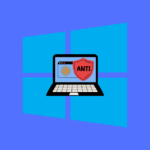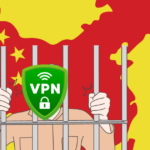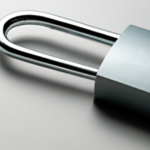Hello, internet explorers! I’m Dr. Edward Baldwin, and today, we’re setting off on an exploration of a pivotal topic for anyone navigating the digital realm by clicking, scrolling, or tapping: How to Stay Safe on the Internet. In a time where our lives are significantly intertwined with the online world, grasping the basics of internet safety isn’t just beneficial – it’s essential.
In this guide, we’re not just brushing over the basics; we’re diving into practical, actionable strategies that will fortify your digital presence. From phishing scams to data breaches, the internet can be a minefield, but with these eight essential tips, you’ll be equipped to navigate it safely and confidently.
Whether you’re a casual browser, a remote worker, or a social media enthusiast, these tips are your armor in the vast and often wild world of the internet. So, let’s get started and turn you into a cyber-safety savvy netizen!
Table of Contents
Understanding Internet Safety Basics

When I’m online, I make sure to follow several key safety practices to protect my personal information and maintain my privacy. Here are those basics, which I highly recommend:
- Secure Connections: I always use secure internet connections and avoid public Wi-Fi for sensitive transactions. Secure connections are indicated by “https://” at the beginning of the web address.
- Personal Information: I’m careful about the personal details I share online. I never divulge sensitive data like my address or phone number on public platforms.
- Strong Passwords: I use complex passwords that combine letters, numbers, and symbols. I also make it a point to change my passwords regularly.
- Privacy Settings: I frequently check and adjust my privacy settings on social media and other platforms to control who can see my information.
- Antivirus Software: I protect my devices with updated antivirus software. This helps prevent malware and other cyber threats from infiltrating my computer.
- Data Backup: I regularly backup my data. This way, I’m not at risk of losing everything should there be a system failure or compromise.
These practices are my cornerstone for a safer experience online. Remember, a bit of caution goes a long way in preserving internet safety.
Creating Strong Passwords
In my experience, ensuring your online safety starts with creating strong passwords. I’ll guide you through using password managers and setting up two-factor authentication to protect your online presence.

Using Password Managers
I find password managers to be incredibly helpful. They store and encrypt all your passwords in one place. With a password manager, I only need to remember one master password. Here’s a brief rundown on their benefits:
- Security: They generate strong, unique passwords for each of your accounts.
- Convenience: Automatically fill in passwords for you.
- Peace of Mind: Encrypted storage means even if someone accesses your password manager, they can’t read your passwords.
Enabling Two-Factor Authentication
Two-factor authentication (2FA) adds an extra layer of security, which I always recommend. When enabled, you’ll need to provide two forms of identification:
- Something you know (like your password)
- Something you have (like a mobile device for a one-time code)
By combining 2FA with strong passwords, I’ve significantly reduced the risk of unauthorized access to my accounts.
Recognizing and Avoiding Scams

In navigating the digital world, I place high importance on staying vigilant against scams. Here are specific strategies I use to identify deceptive tactics and safeguard my information.
Identifying Phishing Attacks
I pay attention to the signs of a phishing email or message. These often include:
- Unfamiliar Greetings: Be wary of messages that use generic salutations like “Dear Customer” instead of my name.
- Urgent Requests: A message that urges immediate action, especially concerning sensitive information, is usually suspicious.
- Spelling and Grammar Errors: Professional organizations typically proofread their messages, so numerous mistakes can indicate a scam.
- Suspicious Links: Hovering over a link without clicking shows me whether it leads to an unexpected or misspelled web address.
I also keep an eye out for emails claiming to be from government agencies or large corporations with requests that feel out of character for such institutions.
Handling Suspicious Emails and Messages
When I receive an email or message that appears dubious, here’s my action plan:
- Do Not Respond or Click Links: I never provide personal information or click on any links.
- Verify the Source: If claiming to be a legitimate organization, I contact them through official channels to confirm the message’s authenticity.
- Use Security Measures: I ensure that my devices have the latest security software for added protection against potential threats.
- Report the Scam: By reporting to relevant authorities, I help in the effort to combat these fraudulent activities.
By following these steps meticulously, I contribute to my safety and the safety of others online.
Ensuring Privacy Protection

In my experience, safeguarding your personal information involves some essential habits, particularly concerning secure internet connections and social media settings.
Using Secure Connections
Whenever I connect to the internet, I make sure to use a secure connection. Wi-Fi networks that require a password are more secure than open networks. At home, I strengthen my Wi-Fi security by setting a strong router password and changing it regularly. I also use a Virtual Private Network (VPN), especially when on public Wi-Fi, to encrypt my internet traffic, which helps protect my data from prying eyes.
Managing Social Media Settings
Proper management of social media settings is crucial to my privacy. On each platform, I navigate to the privacy settings and:
- Review Contact Information: Ensure my phone number and email address are not publicly visible.
- Restrict Post Visibility: Customise who can see my posts, often limiting visibility to friends only.
- Turn Off Location Sharing: Disable the function that allows my location to be attached to my posts.
- Cull Friends List: Regularly review my friends or followers list to remove people I no longer have a connection with.
I also like to look out for updates in privacy policies or settings, as these platforms often change their terms or functionalities.
Installing and Updating Antivirus Software

When I think about internet safety, one of the first things that comes to my mind is ensuring my antivirus software is installed and regularly updated. Here’s how I manage this crucial task:
Installing Antivirus Software:
- I start by selecting a reputable antivirus software. There are many options available, some of which are verified by experts.
- I download the antivirus program from the official website to avoid counterfeit software.
- I follow the on-screen installation instructions, making sure to enter any license keys if required.
Updating Antivirus Software:
- I set my antivirus to update automatically. This is easy to configure within the software settings.
- To manually update, I usually navigate to the settings or update section within the software.
Why Updates Matter:
- Cyber threats evolve rapidly, and antivirus software relies on the latest virus definitions to detect new threats. Regular updates ensure I’m protected against the latest risks.
Here’s a quick checklist I use to keep my antivirus effective:
- Choose a Reliable Antivirus: I opt for software with strong performance records.
- Regular Updates: I ensure my software is set to update automatically.
- System Scans: I schedule regular full system scans to check for malware.
- Stay Informed: I keep an eye on news about emerging threats.
By following these steps, I help protect my digital life from the myriad of threats lurking online. Remember, installing antivirus software is just the start; keeping it updated is what maintains the shield against potential cyber-attacks.
Regularly Updating Operating Systems and Applications

Keeping our digital devices secure is a priority for me, and it should be for you too. I make it a practice to update my operating system (OS) and applications whenever updates become available. Here’s why I think it’s necessary and some simple steps to do it.
Why Update?
- Security patches: Developers constantly work to fix flaws. Once these fixes are ready, they’re released as part of updates.
- Performance improvements: Updates often include optimizations that can make our devices run smoother.
- New features: Who doesn’t love new and improved functionalities that enhance our user experience?
How to Update:
- Enable Automatic Updates:
- For the OS, I always enable automatic updates to ensure I’m not missing out on crucial security patches.
- I do this by going into the system settings and selecting ‘Automatic Updates’.
- Check App Settings:
- For apps, I check each app’s settings or preferences menu and opt-in for automatic updates.
- Regular Manual Checks:
- Sometimes, I manually check for updates by going to the app store or the application’s ‘Check for Updates’ feature, just to be sure.
Tip: Schedule regular checks. I like to do a quick sweep every week to ensure everything’s up to date.
By following these steps, I maintain a level of confidence that my digital life is safer from the ever-present cyber threats. Remember, staying up to date is not just an act of maintenance; it’s a proactive measure towards cyber safety.
Backing Up Important Data

When I think about keeping my files safe, I prioritize backing up important data. Regular backups are my insurance against data loss from hardware failure, accidental deletions, or cyber threats like ransomware.
Here’s the strategy I use to back up my files:
- Frequency: I back up my data at least weekly. For my work-related files, I do it daily due to their critical nature.
- 3-2-1 Rule: I follow this golden rule:
- 3 copies of any important file (1 primary and 2 backups)
- 2 different media formats (like an external HDD and cloud storage)
- 1 off-site backup to protect against physical disasters
| Medium | Advantage | Consideration |
|---|---|---|
| External Hard Drives | High storage capacity, portability | Can fail, should be kept securely |
| Cloud Storage | Accessible from anywhere, off-site backup | Depend on internet access, subscription costs |
| Optical Media | Long shelf-life for archival | Limited storage capacity, less convenient |
- Automation: I use software that automatically backs up my files. This saves me from having to remember to do it manually.
- Testing Backups: I regularly check my backups to ensure they’re not corrupted. This step is crucial, so I’m confident I can restore my data if needed.
By following these practices, I keep my digital life secure and bounce back quickly from any potential data disaster.
Educating Children About Internet Safety

As a parent, I know how crucial it is to teach my children about staying safe online. The internet is filled with knowledge and opportunities for learning, but it also has its fair share of risks. Inappropriate content and cyberbullying are just a couple of dangers that can lurk behind a screen.
Here’s how I approach this important issue:
- Open Conversation: I make a point to talk with my kids openly about the internet. It’s important to discuss the risks, such as exposure to inappropriate content and the dangers of cyberbullying. Regular conversations can help ensure they feel comfortable coming to me if they encounter anything upsetting.
- Monitoring Online Activity: I believe that oversight is a key part of internet safety for kids. I might check browser history and set boundaries on what can be accessed. Age Group Monitoring Level Young Kids High supervision Tweens Moderate with check-ins Teens Privacy-respecting checks
- Safe Browsing Habits: Educating my kids on how to browse safely is a continuous process. We go over the importance of not sharing personal information and the consequences of downloading from unreliable sources.
- Tools for Safety: Utilizing built-in safety tools in operating systems and browsers is essential. I teach my kids how to adjust settings like Google Safe Search to filter out harmful content.
Above all, I encourage a culture of accountability and learning when it comes to internet use. Internet safety isn’t just about restrictions; it’s about educating my children to navigate the digital world with awareness and responsibility.
Staying Informed on Latest Security Threats

In today’s digital landscape, staying updated on the latest security threats is as crucial as having strong passwords. I ensure that I’m informed by frequently visiting reliable security news websites and blogs which highlight current scams, malware, and security breaches.
I make it a habit to check these sources:
- Security-focused websites: They offer a wealth of information on current security issues, often with actionable advice.
- Official software updates and patches: Regularly updating my software is vital, as these updates often contain fixes for recent security vulnerabilities.
Moreover, I subscribe to newsletters from trusted cybersecurity firms. These newsletters are a convenient way to receive curated security content directly to my inbox.
I also use a checklist to help maintain security hygiene:
- Set reminders to order free credit reports regularly.
- Monitor bank and credit card statements for unauthorized transactions.
- Stay educated on how social media platforms may expose my information and adjust privacy settings accordingly.
By keeping these practices, I minimize the risk of falling victim to new threats. Remember, in the realm of internet security, knowledge truly is power.
The Final Word
And there we have it — a comprehensive guide to fortifying your digital life. “How to Stay Safe on the Internet: 8 Essential Tips for Online Security” isn’t just a set of guidelines; it’s a roadmap to empowering yourself in the vast and ever-evolving digital landscape. Remember, staying safe online isn’t a one-time effort; it’s an ongoing process of staying informed, being vigilant, and adapting to new threats.
As we conclude, keep in mind that the most powerful tool in your online safety arsenal is knowledge. By understanding the risks and knowing how to counter them, you can enjoy all the benefits of the internet without falling prey to its pitfalls. So, stay curious, stay cautious, and above all, stay safe. Here’s to a more secure online journey for everyone!
How to Stay Safe on the Internet FAQs

In this section, I cover some common concerns you might have about internet safety and straightforward ways to address them. I hope you find these tips helpful and easy to apply to your daily online activities.
What are the best practices for creating secure passwords?
To create secure passwords, I aim for a mix of upper and lower case letters, numbers, and symbols. I avoid using easily guessed information like birthdays or common words. I also recommend changing passwords regularly and not repeating passwords across different sites.
How can I recognize and avoid phishing scams?
I stay vigilant by checking the sender’s email address for authenticity and looking for poorly written content. I never click on suspicious links or attachments in emails. To avoid phishing scams, I also verify the information through official channels if an email requests sensitive information.
What steps should I take to protect my personal information online?
I protect my personal information by not oversharing on social media and keeping privacy settings updated. When I submit information online, I ensure the site is secure, indicated by ‘https://’ in the URL, and I use a VPN when connecting to public Wi-Fi.
Why is it important to regularly update security software?
Regular updates to my security software are crucial because they include patches for newly discovered vulnerabilities. Staying updated means I am better protected against the latest threats.
How can I ensure safety while participating in online communities?
I ensure safety in online communities by being careful about what personal information I share and by using screen names that don’t reveal my real name. I also report any suspicious or abusive behavior to the community moderators.
What should I do if I encounter suspicious activity or cyber threats?
When I encounter suspicious activity, I report it to the appropriate authorities, such as my internet service provider or platforms’ abuse teams. For cyber threats, I maintain up-to-date antivirus software to detect and mitigate potential risks.
- Amazon Email Phishing: How to Identify and Avoid Scams - May 11, 2025
- Malwarebytes vs McAfee: Decoding the Ultimate Antivirus Battle - May 11, 2025
- Best Antivirus for Windows 10: Expert Recommendations for 2023 - May 11, 2025









